Overview And Highlights
- Based On 8 Reviews
TRIP FACTS

Highlights of Everest Base Camp Trek
- Travel to the bottom of the world's tallest mountain, Mount Everest, at 5,364m
- Experience grand views of the world’s highest peaks—Everest, Lhotse, Nuptse, Makalu, Cho-Oyu, Ama Dablam
- Stand atop Kala Patthar (5,545m) for up-close, full-scale Everest views
- Explore timeless Sherpa heritage sites: Tengboche Monastery, Khumjung Museum
- Visit Namche Bazaar, the heart of Sherpa culture and acclimatization
- Trek through Sagarmatha National Park, a UNESCO World Heritage Site
- Cross the Hillary Suspension Bridge and witness Khumbu Glacier and Icefall
- Immerse in Sherpa culture, Buddhist monuments, and Himalayan wildlife
The Everest Base Camp Trek is more than a journey—it’s a chance to retrace the legendary footsteps of Sir Edmund Hillary and Tenzing Norgay, experience Sherpa hospitality, and stand beneath the mighty shadow of the world’s highest peak.
The Everest Base CampTrek is arguably the most renowned and iconic trekking destination in the Himalayas. Situated in the Mahalangur Himal sub-range, Mount Everest Base Camp Trek takes you to the world’s highest peak, towering at 8,848 meters. In Nepal, the mountain is revered as Sagarmatha, while in Tibet, it is known as Chomolungma.
Retrace the historic footsteps of Sir Edmund Hillary and Tenzing Norgay, who first summited Everest in 1953. As you venture into the heartland of the Sherpas in the Khumbu Valley, you’ll gradually acclimatize on your way to Everest Base Camp. This trek offers stunning views of the Everest region, home to four of the world’s six tallest peaks: Everest, Lhotse, Makalu, and Cho-Oyu.
Explore camp base Everest trek routes while immersing yourself in Sherpa culture. You'll visit the highest Buddhist monasteries, trek through UNESCO-listed Sagarmatha National Park, and witness unique Himalayan flora and fauna.
The Sherpas, renowned for their stamina and unmatched mountaineering expertise, enrich the trek with their warm hospitality and rich culture. Along the trails, you’ll see Buddhist monuments, stone stupas, and intricately carved Tibetan mani walls.
During the trek Everest Base Camp journey, Kala Patthar (5,545m) is a highlight. A short hike from Gorakshep rewards you with panoramic views of Mount Everest, Nuptse, Lhotse, and the Khumbu Glacier.
If you've dreamed of a hike to Everest Base Camp, let us help you make it a reality!
Best Time for Everest Base Camp Trek
-
Spring (March to May):
Clear skies and superb visibility make this season ideal for trekking and photography. Rhododendrons bloom, and the daytime temperatures range from 15°C to 20°C in the lower regions. Higher elevations can dip to -5°C. -
Summer/Monsoon (June to August):
Though trails can be muddy with reduced visibility, the lush landscapes and quieter paths are appealing. Daytime temperatures in lower regions reach 25°C, while higher regions can drop to 0°C. -
Autumn (September to November):
Autumn is the best season for the base camp Everest trek. Clear skies offer stunning mountain views, and festivals like Dashain and Tihar bring cultural vibrance. -
Winter (December to February):
Enjoy serene trails and snow-covered landscapes, but prepare for colder temperatures, especially at higher altitudes where they can drop to -15°C.
| Season | Highlights | Considerations |
|---|---|---|
| Spring (Mar–May) | Rhododendron bloom, best visibility | Popular, moderate temperatures |
| Summer (Jun–Aug) | Quiet trails, lush valleys | Rainy, cloudy, flight delays |
| Autumn (Sep–Nov) | Clear skies, festivals, crisp views | Cold at night, busiest |
| Winter (Dec–Feb) | Serene, snowy landscapes | Very cold, risk of closure |
Unique Highlights of the Everest Base Camp Trek
- Lukla Flight: Start your adventure with the thrilling flight to Lukla.
-
Namche Bazaar: Acclimatize in the bustling Sherpa town.
-
Tengboche Monastery: Attend morning or evening prayers at this sacred spot.
-
Syangboche Airstrip: Enjoy panoramic Himalayan views.
-
Khumjung Village: See the Hillary School and legendary Yeti scalp at the monastery.
-
Everest Base Camp: Stand at the foot of the world’s tallest mountain.
-
Kala Patthar: Hike to the famous viewpoint for sunrise/sunset.
-
Sagarmatha National Park: Spot musk deer, Himalayan tahrs, and rare birds.
Biodiversity & Responsible Trekking
-
Sagarmatha National Park is home to rare wildlife (musk deer, snow leopard, Himalayan monal)
-
Trekking responsibly protects this UNESCO World Heritage site
-
We support leave no trace, use local teahouses, and avoid single-use plastics
Packing Essentials for Your EBC Trek
Carry appropriate clothing and gear for the EBC trek, including:
- A few pairs of Thermal tops
- Fleece jacket/pullover
- Windcheater: waterproof shell jacket, one pair
- Down jacket: (The company will provide it if you do not have your own.)
- Comfortable fleece or wool trousers
- Trekking pants—at least two pairs
- Mittens/woolen gloves
- Warm Hiking socks
- Trekking shoes with spare laces
- pair of flip-flop
- Underwear and swimming costumes
- Hiking Cotton trousers/t-shirts
- Sun hat/scarf
- Sunglasses
- Sleeping bag (the company will provide it if you do not have your own)
- Trekking poles (Not 100%)
- Day bag above 40 L
- 1 set: Headlamp
- Small lock for the day backpack
- Reusable water bottles: 2 letters
- Water purification tablets or electric light
- Wash towel
- Toiletries (wet tissue, quick-drying towel, toilet paper, moisturizers, lip balms, sunscreens, sanitary pads, hand sanitizer, nail clipper, small mirror, toothpaste & brush, etc)
- Rain poncho
- Basic personal first aid kit.
Safety & Acclimatization
-
Professional, first-aid-trained guides carry a pulse oximeter and first aid kit
-
Daily health checks for altitude sickness prevention
-
Planned acclimatization days in Namche and Dingboche
-
Emergency helicopter evacuation available (insurance required)
-
24/7 support from Annapurna Encounter
For those seeking a shorter trek, check out our 10-day Everest Base Camp trek, offering a condensed yet fulfilling experience.
Everest Base Camp Trek Cost
The Everest Base Camp Trek is one of the most iconic treks in the world, offering breathtaking views of Mount Everest and the surrounding peaks. Below is the cost structure based on the group size:
Everest Base Camp Trek Cost – Group Pricing (Per Person in USD)
| Group Size | Budget Package | Standard Package | Premium Package |
|---|---|---|---|
| 1 Person (Solo) | $890 | $1,480 | $2,250 |
| 2 People | $840 | $1,390 | $2,150 |
| 3–7 People | $790 | $1,320 | $2,050 |
| 8–12 People | $750 | $1,250 | $1,950 |
| 13–20 People | $710 | $1,180 | $1,850 |
✅ Budget = stripped down, affordable (no meals, local transport, tea houses).
✅ Standard = your main selling point (balanced comfort, all meals, porter, 3★ hotel).
✅ Premium = luxury focus (best hotels, private transport, top lodges).
The cost includes permits, accommodation, meals, and guide services. Prices may vary depending on the season and additional requirements.
Contact us for more details and to customize your trip!
Itinerary Expand All Close All
Transfer to Lukla by morning flight. Enjoy a 30-minute scenic flight with great Himalayan views. After landing at Tenzing-Hillary Airport, embark on a pleasant 3-4 hour downhill trek through Sherpa villages and terraced fields, reaching our lodge in Phakding by day's end.
Food
BLD
Accomodation
Tea house lodges
Elevation
2640
Today's journey to Namche Bazaar is a long one. We'll start with a gradual walk along the river, crossing several bridges until we reach the Sagarmatha National Park entrance near Monjo village. Sagarmatha means 'Everest' in Nepali, and Sherpas call it Chomolungma, which translates to 'Great Mother' in both languages.
We'll continue with a pleasant walk along the riverbed before ascending through a forested trail with snow-capped peaks in view. Eventually, we'll arrive at the exciting town and village of Namche Bazaar.
Food
BLD
Accomodation
Lodge
Elevation
3440
A rest and a free day at Namche Bazaar for proper and necessary acclimatization at this great height of above 3,440 m high before heading higher ground, at Namche spend the day with scenic hike around and browsing the streets and shops, Namche holds a colorful and busy Saturday Market every week.
Food
BLD
Accomodation
Lodge
Elevation
3440
We begin our trek to Tengboche via Phunki. The trek until Phunki is not very difficult. After reaching Phunki we will ascend towards the biggest monastery which is Tengboche Monastery which lies in Tengboche village. The UNESCO world heritage site Sagarmatha National Park is also located here; we can enjoy the beautiful panoramic views of the Himalayas which the monastery is blessed with. The Himalayas including Mt.Everest, Nuptse, Lhotse, Ama Dablam, and Thamserku can be viewed from here. We will be staying overnight in Tengboche.
Food
BLD
Accomodation
Lodge
Elevation
3867
Morning walk leads to pleasant downhill for an hour to a bridge, where tree lines stops for short juniper and rhododendron bushes known as azalea facing dramatic change in landscapes.
Heading higher up to the last permanent village at Pangboche, from here onwards are temporary settlement to cater the needs of trekkers at Dingboche, Lobuche and Gorakshep areas.
As the trek progress reaching at Somare and then on windswept country to reach a bridge following the Imjatse River, with last climb to enter into beautiful Imjatse valley surrounded with famous peaks Amadablam-Lhotse with views of Island peaks towards east.
The last leg of the day brings you at Dingboche, a summer settlement with barley and buck wheat field within its patch of stone walls to keep the animals off from grazing.
Food
BLD
Accomodation
Lodge
Elevation
4260
Dingboche is our acclimatization stop which is located in Chukung Valley. After having breakfast we will trek towards Chukung valley which is not very difficult. We will have our lunch here. This valley is famous for remarkable views of mountains such as Makalu, Lhotse, Chalotse, and Ama Dablam. Moreover, we will also get to see the beautifully arranged fields with stone walls in order to protect the seasonal crops from cold winds and grazing animals. After this remarkable short trek, we will then go back to Dingboche. We will have our dinner here and our overnight stay will be on Dingboche.
Food
BLD
Accomodation
Lodge
Elevation
4260
Morning start with short climb on top a ridge with Buddhist prayer monuments and then on nice gradual path with slow up as the walk leads with excellent mountain views to reach a small place at Thugla for lunch.
Here Khumbu glacier melts into a raging river, this where path from Pheriche and Dingboche joins after a rest and refreshing stop, walk follows with steep climb for an hour to Thugla pass, where you can find witness memorials of unfortunate climbers who have died climbing on Mt. Everest, Lhotse or other high mountains.
From this isolated spot, walk on gradual path to reach at Lobuche for overnight stop.
Food
BLD
Accomodation
Lodge
Elevation
4930
Today walk leads to our main highlight of the adventure at Everest Base Camp, walk carries on for few hours with short steep climb in between over glacier and moraine, reaching at Gorakshep, beneath lofty peak of Pumori and Kalapathar.
Walk continues towards Everest Base Camp over moraine and ice to reach at base camp, here enjoy the view of tumbling and notorious Khumbu Ice Fall and glaciers.
After a marvelous and exciting time with adventure of a lifetime experience retrace the journey back to Gorakshep for overnight stop.
Food
BLD
Accomodation
Lodge
Elevation
5180
Morning a steep uphill hike to reach on top of Kalapathar at 5,545 meters, highest point of the adventure with fabulous and unique views of mountains includes Mt. Everest at its closest.
After a great thrill with sweeping views descend back to Gorakshep and continue walk up to Thugla, from here on downhill to Pheriche within windy valley.
A nice scenic walk leads you all the way to Pheriche for overnight stop with many good lodges and a health post of HRA (Himalayan Rescue Association).
Food
BLD
Accomodation
Lodge
Elevation
5545
We will wake up early in the morning and start our journey to Namche by following the trials of beautiful juniper and rhododendron trees and crossing the Bridge of Dudh Koshi River we will move downwards losing almost 2,000ft of elevations.
Leaving the beautiful mountains behind us we can also spot mountain goats, pheasants and other wild animals and birds habitual to the area. We will ultimately reach Sansa from where we will witness mesmerizing views of Ama Dablam, Thamserku, and Nuptse mountains. We will arrive back to Namche and our overnight stay will be there.
Food
BLD
Accomodation
Lodge
Elevation
3440
Today we will have our last day in the mountains. There will be mostly a downhill trek on a trial along the bank of the Dudh Koshi River. We will trek toward the Hillary Suspension bridges, and also pass by several monasteries and villages before reaching Lukla. After reaching Lukla we will take rest and spend some quality time remembering all those bittersweet reminiscences of the journey. Our overnight stay will be on Lukla.
Food
BLD
Accomodation
Lodge
Elevation
2830
Morning as per our flight time transfer to Lukla air terminal and then board in the small plane for exciting half hour flight to reach the hustle and bustle of city life in Kathmandu.
Food
Breakfast
Accomodation
Lodge
Elevation
1350
Services Included on Price
Cost Includes
- Accommodation: Basic tea houses/guesthouses (twin sharing) along the trek
- Transport:
- Domestic flight Kathmandu ↔ Lukla (regular airline)
- Guide & Porter:
- English-speaking trekking guide
- Permits & Fees:
- Sagarmatha National Park entry permit
- Khumbu Pasang Lhamu Rural Municipality permit
- TIMS card
- Extras:
- Basic first aid kit with guide
Cost Excludes
- Meals during trek and in Kathmandu
- Accommodation in Kathmandu (before/after trek)
- Personal trekking equipment (sleeping bag, down jacket, etc.)
- Porter service (available at extra cost)
- Hot showers, battery charging, Wi-Fi on trek (paid locally)
- Travel insurance (mandatory, covering high altitude & emergency evacuation)
- International airfare & Nepal entry visa fees
- Alcoholic beverages, soft drinks, bottled water, snacks
- Tips for guide and drivers
- Extra costs due to delays (weather, strikes, natural disasters, Lukla flight cancellations, etc.)
Standard Package Service Excludes
- Accommodation:
- 3★ hotel in Kathmandu (2 nights, breakfast included)
- Tea houses/lodges during the trek
- Transport:
- Domestic flight Kathmandu ↔ Lukla (regular airline)
- Private airport transfers
- Meals:
- Breakfast in Kathmandu
- Three meals per day during trek (breakfast, lunch, dinner with tea/coffee)
- Guide & Porter:
- Licensed trekking guide
- Porter service (1 porter for every 2 trekkers)
- Permits & Fees:
- Sagarmatha National Park entry permit
- Khumbu Pasang Lhamu Rural Municipality permit
- Extras:
- Airport pick-up and drop-off
- Basic medical kit
Standard Package Service Excludes
- Lunch & dinner in Kathmandu (except where mentioned)
- Personal trekking gear (sleeping bag, down jacket – available on rent)
- Hot showers, battery charging, Wi-Fi on trek (paid locally)
- Travel insurance (mandatory, covering high altitude & emergency evacuation)
- International flights & Nepal entry visa fees
- Alcoholic beverages, soft drinks, bottled water, snacks
- Tips for guide, porter, and drivers
- Extra night accommodations in Kathmandu or trek route due to flight delays or personal reasons
- Any costs due to unforeseen circumstances (weather delays, natural disasters, political unrest, etc.)
Luxury Package Service Includes
- Accommodation:
- 4–5★ hotel in Kathmandu (2 nights, breakfast included)
- Best available lodges/tea houses during trek (upgraded rooms where available)
- Transport:
- Domestic flight Kathmandu ↔ Lukla (option for helicopter one way)
- Luxury private transfers in Kathmandu
- Meals:
- All meals during trek (menu choices available)
- Breakfast in Kathmandu
- Welcome and farewell cultural dinners in Kathmandu
- Guide & Porter:
- Highly experienced licensed trekking guide
- Porter service with higher baggage allowance
- Permits & Fees:
- Sagarmatha National Park entry permit
- Khumbu Pasang Lhamu Rural Municipality permit
- Insurance for trekking staff
- Extras:
- Trekking gear loan (down jacket, sleeping bag)
- Cultural performance in Kathmandu
- Emergency helicopter coordination (insurance required)
Luxury Package Service Excludes
- International flights to/from Nepal
- Nepal entry visa fees (on arrival)
- Travel insurance with emergency evacuation coverage (mandatory)
- Personal expenses: shopping, laundry, phone calls, souvenirs
- Alcoholic beverages, soft drinks, specialty meals beyond menu
- Tips for guide, porter, and drivers
- Optional luxury upgrades beyond package (private helicopter tours, single room supplement in all lodges, etc.)
- Extra costs due to unforeseen circumstances (weather delays, natural disasters, Lukla flight cancellations, etc.)
Everest Base Camp Trek Altitude Profile
Route Map

FAQs
The trek typically takes 12-14 days, depending on the route and itinerary chosen.
The best time to go for the trek is from September to November and from March to May.
The trek is considered to be moderately difficult, with some steep and strenuous sections. Good physical fitness and proper acclimatization is necessary.
During the trek, you will stay in teahouses or lodges that provide basic accommodation and meals.
It is not mandatory but it's always recommended to hire a guide and/or porter as they are familiar with the route and can help with logistics, and provide valuable information about the culture and history of the region.
Yes, you will need TIMS (Trekkers' Information Management System) and Sagarmatha National Park permit to trek to Everest Base Camp.
Warm clothing, hiking boots, sleeping bag, water bottles, headlamp, first aid kit, sunscreen, sunglasses, and a waterproof jacket are some of the essentials to pack for the trek.
Most teahouses and lodges have charging facilities, but it's always best to have a portable charger as well, as the electricity can be unreliable at times.
You can find a variety of local and international cuisine during the trek, such as dal bhat, momos, and pasta. However, options may be limited in remote areas.
The altitude of Everest Base Camp is approximately 5364m (17,598ft). It's important to be aware of the effects of altitude and to properly acclimatize to avoid altitude sickness.
Regular exercise, cardiovascular training, and strength training for legs, core and back are essential to prepare for the trek. Also, it's a good idea to practice hiking and carrying a backpack.
You can use your phone during the trek, but coverage can be spotty and unreliable at higher elevations. It's best to check with your service provider for international roaming plans before you go.
Shower facilities are not available throughout the trek. You will have to make do with wet wipes, baby wipes or a bowl of warm water to freshen up.
It's important to take acclimatization seriously and follow the guidelines provided by your guide. If you start to feel symptoms such as headache, nausea, or dizziness, it's important to descend to a lower altitude and seek medical attention if necessary.
It is not recommended to trek to Everest Base Camp alone due to the potential risks involved, such as altitude sickness and the remoteness of the region. It is always safer to trek with a guide or in a group.
It is possible to trek to Everest Base Camp with children, but it's important to consider their physical fitness and ability to handle the altitude and rigorous trekking conditions. It is always best to consult with a doctor before making the decision.
The monsoon season (June to August) is not the best time to trek to Everest Base Camp as the trails can be muddy, slippery, and dangerous. It is also not recommended as the visibility is poor during this season.
Yes, helicopter evacuation service is available in case of emergency during the trek. However, it can be quite expensive, and it's important to have travel insurance that covers helicopter evacuation.
Yes, it is possible to combine the Everest Base Camp Trek with other trekking or climbing options in the region such as Island Peak, Ama Dablam, or Gokyo Lakes Trek.

.jpg)
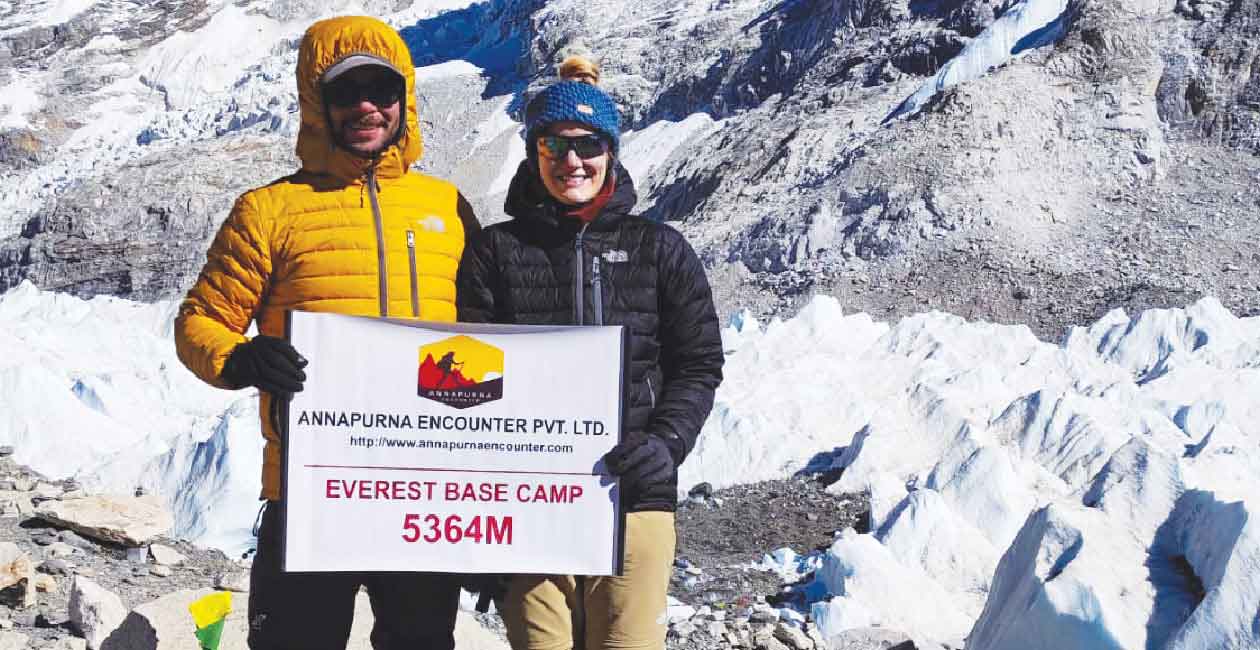
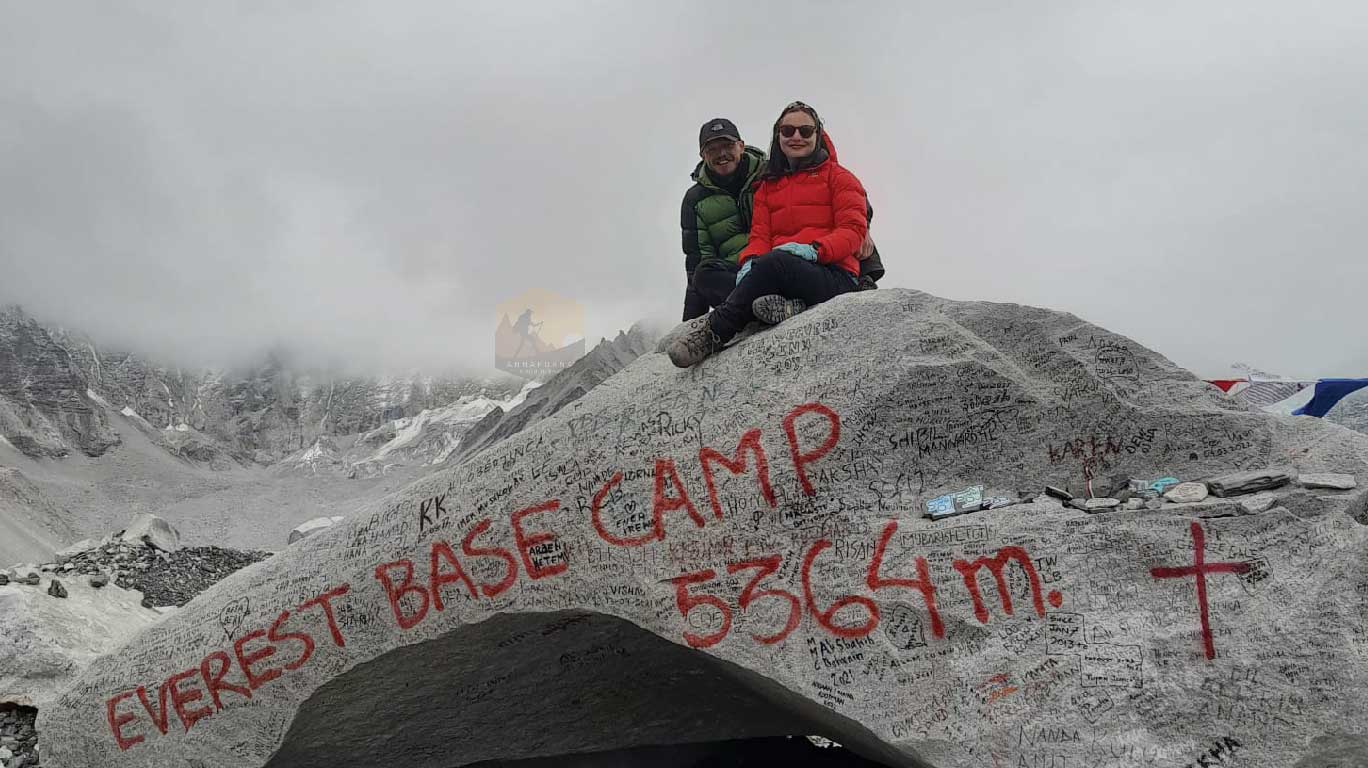

.jpg)
.jpg)
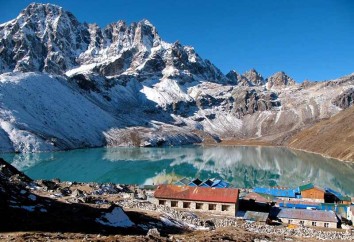
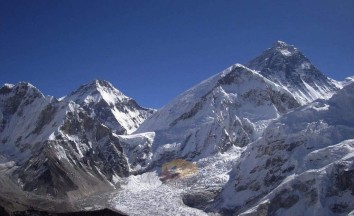
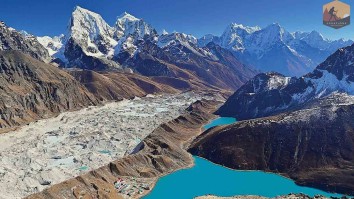
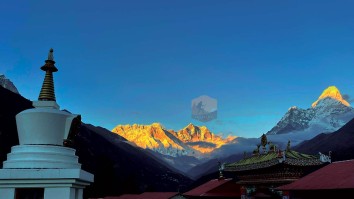
.jpg)
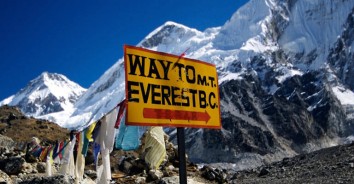
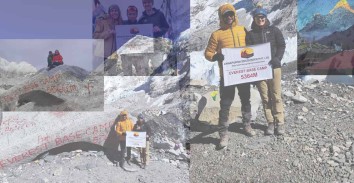
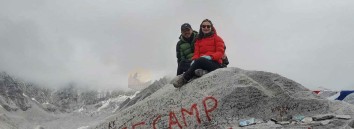
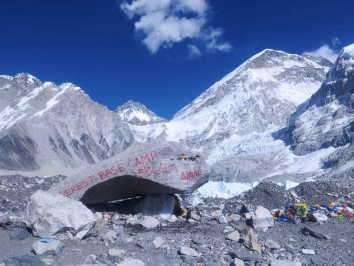
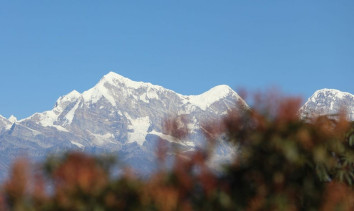
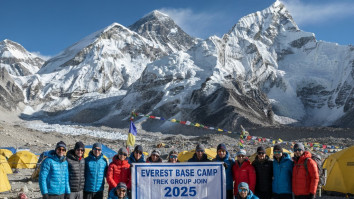

Vanna Workman
Angola
Communicative and clear before the trip
24th January, 2023
The owner, was communicative and clear before the trip; his website is thorough; our guide, Kanchha is a professional – always patient and never making us feel rushed, sharing his knowledge of the mountains and mountain culture; and our porters, Doma and Karum, looked
Bryan Monaghan
United Kingdom
Would highly recommend Annapurna Encounter
24th July, 2022
Would highly recommend Annapurna Encounter to anyone looking to do trekking in Nepal. We received excellent help in organizing our trip, and were set up with an excellent Sherpa who spoke really good English, was very informative, and very friendly and helpful. Really couldn't have asked for a better experience. Will definitely be using this company again when we go back to Nepal.
James Wilson
American Samoa
Annapurna Encounter was excellent!
20th September, 2023
Thank you so much Annapurna Encounter! I was in dilemma. We were fortunate to have the perfect trekking team from Annapurna Encounter. Their expertise, positive attitude, and willingness to go the extra mile made our EBC trek an unforgettable experience. Thank you for assembling such an incredible team!
Samirbolan
United Kingdom
"Annapurna Encounter: Your Gateway to Everest Base Camp Adventure"
27th September, 2023
I had an exceptional experience with Annapurna Encounter while embarking on a journey to the Everest Base Camp. Not only did they offer an affordable fee, but their staff were also incredibly friendly, knowledgeable, and always eager to help. The level of service provided was top-notch, surpassing my expectations. Annapurna Encounter truly knows how to make your trek to Everest Base Camp an unforgettable adventure, and I wholeheartedly recommend their services to any traveler seeking an incredible Himalayan experience.
Aniij
Australia
Golden moments
17th October, 2023
I would wholeheartedly recommend Narayan and the travel agency to anyone seeking an unforgettable trekking experience in Nepal. They turned what could have been a challenging adventure into a remarkable and life-changing journey. Thank you for the memories that will last a lifetime!"
Tom Pilkington
United Kingdom
Amazing Everest base camp trek
8th November, 2024
My partner and I spent 12 days on the Everest Base Camp trek and it was genuinely one of the best experiences of our lives. The company were fantastic at organising everything for us and our guide Nwang looked after us very well and booked some great tea houses on the way. We would definitely recommend using Annapurna Encouters to book your trek and would use them again in the future.
Steffen Eisle
Germany
Trekking to Everest Base Camp with Annapurna Encounter was undoubtedly an unforgettable experience
8th November, 2024
Trekking to Everest Base Camp with Annapurna Encounter was undoubtedly an unforgettable experience. From start to finish, the organization was outstanding and the company's performance was excellent.
The communication before and during the trek was remarkable. The staff at Annapurna Encounter were extremely professional, friendly and responsive. They patiently answered all my questions and made sure I always felt well informed and prepared.
During the trek, I felt in the best hands. The guides were extremely knowledgeable and experienced, which not only created a sense of security but also a deeper connection to the stunning Himalayan surroundings. All the logistical planning, from accommodation to food, was executed perfectly.
The experience of reaching Everest Base Camp was made even more unforgettable by the support and dedication of the Annapurna Encounter team. Their love and passion for the mountains was reflected in their service.
Overall, I can fully recommend Annapurna Encounter. If you are looking for an unforgettable trekking experience in the Himalayas and value professional organization and excellent service, you are in the best hands with them.
Thank you, Annapurna Encounter, for this incredible adventure and the unforgettable memories!
Pablo Duburcq
France
Great E.B.C. trek
4th December, 2024
Amazing experience, I couldn’t ask for more.
From the crew in Kathmandu to my guide Gombu Sherpa in Lukla, everything was awesome. Good price and meticulous service.
I went for EBC and I hope I’ll be able to trek somewhere else in Nepal with Subas and the team in the future!
Go for it.